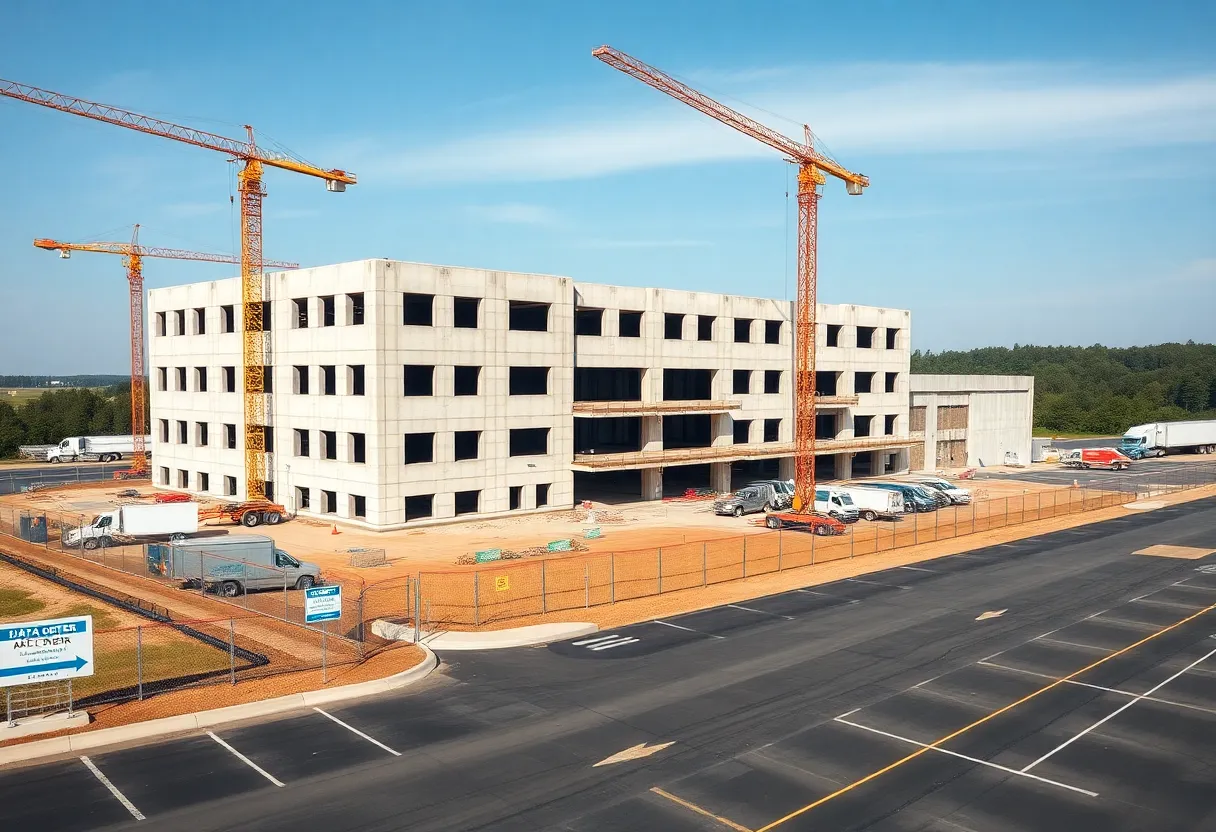News Summary
The global construction and design software market is set to grow from approximately USD 12.21 billion to nearly USD 30 billion by 2034, driven by AI adoption, regulatory changes, and urbanization. Key markets include North America, Asia Pacific, and Europe, with significant technological advancements in Building Information Modeling (BIM) and cloud-based solutions. Challenges like technology reluctance and skills shortages persist, but rising infrastructure investments present lucrative opportunities for future innovations in the sector.
Global Construction and Design Software Market Set to Thrive by 2034
The global construction and design software market is gearing up for tremendous growth, with projections indicating an increase from USD 12.21 billion in 2025 to nearly USD 30 billion by 2034. This remarkable expansion corresponds to a compound annual growth rate (CAGR) of 10.50%, driven primarily by advancements in technology and significant investments in infrastructure.
North America Leading the Charge
As of 2024, the North American market has already surpassed USD 3.65 billion and continues to set a rapid growth trajectory with an anticipated CAGR of 10.65% over the forecast period. The overall global market was valued at USD 11.05 billion the same year. Factors contributing to this surge include the rising adoption of novel technologies such as artificial intelligence (AI) and machine learning (ML), alongside a growing demand for energy-efficient designs and investments in smart city initiatives.
Technological Adoption Fuels Growth
The integration of AI tools into the construction sector is proving vital for the optimization of design and planning processes. This enhances project efficiency and improves safety across various projects. The U.S. construction and design software market, estimated at USD 2.63 billion in 2024, is predicted to reach around USD 7.28 billion by 2034, with a CAGR of 10.71% from 2025 onward.
Building Information Modeling on the Rise
Within the realm of construction technology, Building Information Modeling (BIM) continues to gain traction. This innovative technology supports sustainable building development and effective project management, aligning well with consumer preferences for enhanced building designs and investments in sustainable infrastructure.
Rapid Growth in Asia Pacific
Looking ahead, the Asia Pacific region is poised to record the fastest growth in the construction and design software market. This trend is propelled by rapid urbanization and the integration of advanced technologies in construction processes. Key contributors to this expansion include countries such as Japan, Singapore, China, India, and South Korea.
European Market on the Rise
Europe is also expected to experience significant growth in the coming years. This is primarily due to the rising digitization trend, an increasing focus on energy-efficient construction solutions, and several government initiatives aimed at promoting smart urban development.
Advantages of Cloud-Based Solutions
The growing use of cloud-based design software is enhancing project coordination and leading to cost reductions, particularly on large-scale construction projects. The project management and scheduling software segment holds the largest share in this market, while the on-premise software segment currently dominates overall software solutions.
Future Opportunities and Challenges
Despite the promising growth trajectories, the construction and design software sector faces some challenges. Key obstacles include a reluctance to adopt advanced technologies and a shortage of skilled professionals, particularly in underdeveloped regions. Nevertheless, ongoing investments in infrastructure are expected to create lucrative opportunities within the market.
Conclusion
As investments in smart city development increase, the demand for construction and design software will likely rise correspondingly. The growing adoption of advanced technologies such as AI and various building management solutions will lead to streamlined processes and improved outcomes across the construction sector. As more organizations recognize the benefits of cloud-based software—including cost-effectiveness, enhanced collaboration, and increased security—adoption rates are likely to accelerate. Ultimately, the rising construction activities globally will further drive the expansion of the construction and design software market, paving the way for a more technologically advanced industry.
Deeper Dive: News & Info About This Topic
Additional Resources
- Precedence Research
- Architectural Digest
- G2 Learning Hub
- Wikipedia: Construction Software
- BD+C Network
Author: Construction NY News
NEW YORK STAFF WRITER The NEW YORK STAFF WRITER represents the experienced team at constructionnynews.com, your go-to source for actionable local news and information in New York and beyond. Specializing in "news you can use," we cover essential topics like product reviews for personal and business needs, local business directories, politics, real estate trends, neighborhood insights, and state news affecting the area—with deep expertise drawn from years of dedicated reporting and strong community input, including local press releases and business updates. We deliver top reporting on high-value events such as the New York Build Expo, infrastructure breakthroughs, and cutting-edge construction technology showcases. Our coverage extends to key organizations like the Associated General Contractors of New York State and the Building Trades Employers' Association, plus leading businesses in construction and real estate that power the local economy such as Turner Construction Company and CMiC Global. As part of the broader network, including constructioncanews.com, constructiontxnews.com, and constructionflnews.com, we provide comprehensive, credible insights into the dynamic construction landscape across multiple states.





